A Guide to Gorilla Trekking in Uganda – Safari, Permits & Best Tips
Gorilla trekking in Uganda is one of the most life-changing experiences any traveller can have. With more than half of the world’s remaining mountain gorillas residing in Uganda’s lush forests, the country offers an unparalleled opportunity to observe these magnificent creatures in their natural habitat. The experience of coming face-to-face with endangered mountain gorillas is something that remains etched in the heart of every adventurer.
Uganda is home to two major gorilla trekking destinations: Bwindi Impenetrable Forest and Mgahinga. Both parks provide unforgettable encounters with habituated gorilla families, ensuring that every trekker gets the best chance to see and photograph these gentle giants up close.
Led by Hillary, a professional wildlife photographer, these gorilla tours not only give travellers an expert guide through the forests but also provide useful tips for capturing the best gorilla portraits. Whether you are an experienced photographer or just a traveller with a camera, Hillary ensures you leave with breathtaking shots of mountain gorillas.
Why Choose Uganda Gorilla Trekking?
1. Uganda Offers the Best Gorilla Encounters
Uganda is one of the only three countries in the world where travellers can trek gorillas in the wild. The country is home to more than half of the world’s remaining mountain gorillas, making it one of the most rewarding places for gorilla watching. Unlike lowland gorillas, which are found in flatter areas, Uganda’s mountain gorillas reside in dense forests and high altitudes, making the experience more thrilling and adventurous.
2. Two Exceptional National Parks for Gorilla Trekking
Uganda boasts two prime destinations for Uganda gorilla trekking:
- Bwindi Impenetrable National Park – A UNESCO-listed impenetrable forest with over 20 habituated gorilla families.
- Mgahinga National Park – A smaller but equally rewarding park located in the Virunga Mountains, bordering Rwanda’s Volcanoes National Park and the Democratic Republic of Congo.
Both parks are managed by the Uganda Wildlife Authority – UWA, ensuring the highest standards of gorilla conservation and sustainable tourism.
Where to Go for Gorilla Trekking in Uganda?
1. Bwindi Impenetrable National Park – Home to Uganda’s Largest Gorilla Population
Located in southwestern Uganda, Bwindi Impenetrable National Park is the country’s most famous gorilla trekking destination. With its thick forests and rugged terrain, Bwindi Forest offers a truly immersive experience in the natural habitat of endangered mountain gorillas.
The park is divided into four main trekking sectors:
- Buhoma Sector – The most popular and easiest to access.
- Ruhija Sector – Ideal for birdwatchers, with many bird species spotted here.
- Rushaga Sector – Home to the largest number of habituated gorilla families.
- Nkuringo Sector – Offers the most challenging treks, rewarding trekkers with stunning views.
2. Mgahinga Gorilla National Park – A Hidden Gem in the Virunga Mountains
Although Mgahinga National Park is smaller than Bwindi National Park, it is part of the Virunga Mountains, where mountain gorilla trekking takes place across Uganda, Rwanda, and the Democratic Republic of Congo.
This park also offers golden monkey tracking, making it an excellent destination for those who want to combine gorilla trekking with other wildlife safaris.
What is a Gorilla Trekking Permit?
A gorilla permit is a mandatory document that allows visitors to enter Bwindi Impenetrable National Park or Mgahinga National Park and spend one hour with a habituated gorilla family. This permit is issued by the Uganda Wildlife Authority (UWA) and ensures that gorilla trekking activities are regulated, sustainable, and contribute to conservation efforts.
Since mountain gorillas are a critically endangered species, the Ugandan government has set strict rules limiting the number of daily visitors. Only eight people are allowed to visit a single gorilla family per day, ensuring that gorillas are not disturbed in their natural habitat.
For this reason, obtaining a gorilla trekking permit is a time-sensitive process, and travelers must book well in advance to secure their preferred dates.
How Much Does a Gorilla Trekking Permit Cost in Uganda?
As of 2025, the cost of a gorilla trekking permit in Uganda is as follows:
- Foreign Non-Residents – $800 per person
- Foreign Residents (with a work permit) – $700 per person
- East African Citizens – UGX 300,000 per person
For travellers looking for a longer experience, Uganda also offers gorilla habituation permits that allow visitors to spend four hours with a semi-habituated gorilla family in Bwindi Impenetrable Forest. This exclusive experience costs $1,500 per person for Foreign Non-Residents, $1,000 for Foreign Residents and 750,000 UGX for East African Citizens. This ultimate experience is ideal for wildlife photographers and research enthusiasts.
Compared to Rwanda’s gorilla trekking permits, which cost $1,500 per person, Uganda remains the most affordable option for those looking to embark on a gorilla trekking safari.
Where to Buy Gorilla Trekking Permits in Uganda?
1. Uganda Wildlife Authority (UWA) Offices
The Uganda Wildlife Authority (UWA) is the official government body responsible for issuing gorilla trekking permits. Permits can be purchased directly from the UWA offices in Kampala, the capital city of Uganda.
Contact Details for Uganda Wildlife Authority (UWA):
📍 Address: Plot 7 Kira Road, Kamwokya, Kampala, Uganda
📞 Phone: +256 414 355 000
🌐 Website: www.ugandawildlife.org
If you are purchasing your permit in person, it is advisable to contact UWA in advance to confirm availability and payment procedures.
2. Through a Licensed Tour Operator
Booking through a licensed Ugandan tour operator is the easiest and most convenient way to secure a gorilla trekking permit. Tour operators have real-time access to permit availability and can handle the entire booking process on your behalf.
A reputable tour operator, such as Hillary Uganda Trips, will help:
✅ Check for available permits on your preferred dates
✅ Make payments to Uganda Wildlife Authority
✅ Arrange transportation and accommodation
✅ Provide a professional guide for your safari
Booking through a trusted tour operator eliminates the hustle of handling payments and paperwork yourself, ensuring a stress-free experience.
3. Online Booking via Uganda Wildlife Authority Website
The Uganda Wildlife Authority (UWA) is working towards providing an online booking system where travellers can directly purchase mountain gorilla permits via their official website. However, this service is still in development, and most travellers rely on either direct UWA office bookings or licensed tour operators.
When to Book Gorilla Trekking Permits in Uganda?
Gorilla permits are in high demand, especially during peak travel seasons. To secure your spot, it is strongly encouraged to book your permits at least 3 to 6 months in advance, particularly if you plan to trek during the dry season when demand is highest.
Best Time to Book a Gorilla Permit:
✅ Dry Season (Best for Trekking & High Demand)
- June to August
- December to February
✅ Wet Season (Less Demand & More Permit Availability)
- March to May
- September to November
If you are traveling in the dry season, permits often sell out quickly, so early booking is essential.
Rules and Regulations for Gorilla Trekking in Mgahinga or Bwindi by Uganda Wildlife Authority
To ensure the safety of both gorillas and visitors, the Uganda Wildlife Authority (UWA) has established strict guidelines for gorilla trekking:
✅ Minimum Age Requirement: Only visitors 15 years and older are allowed to trek gorillas.
✅ Maximum Group Size: Only 8 people per gorilla family per day.
✅ Time Limit: Visitors are allowed 1 hour with the gorillas once they are found.
✅ No Flash Photography: To avoid disturbing the gorillas, flash photography is strictly prohibited.
✅ Keep a Safe Distance: Maintain a distance of at least 7 meters (21 feet) from the gorillas.
✅ Health Precautions: Anyone showing signs of illness (flu, cough, fever) will not be allowed to trek, as gorillas are highly susceptible to human diseases.
Detailed Regulations on Gorilla trekking in Uganda.
1. Age Restrictions for Gorilla Trekking
To participate in gorilla trekking, visitors must be at least 15 years old. This age restriction is in place for several reasons:
✅ Children may struggle with the physical demands of the trek, which can involve steep climbs, dense vegetation, and long hours of hiking.
✅ Younger children may have difficulty following the rules, such as staying quiet and maintaining a safe distance from the gorillas.
✅ Mountain gorillas share 98% of their DNA with humans, making them highly susceptible to human diseases. Younger children are more prone to illnesses like colds and flu, which could be transmitted to the gorillas.
If you are traveling as a family, it is essential to consider alternative activities for younger children, such as nature walks or cultural village tours near Bwindi Impenetrable National Park or Mgahinga Gorilla National Park.
2. Gorilla Trekking Permits – A Must-Have for All Visitors
A gorilla trekking permit is required for all visitors wishing to trek gorillas in Uganda. The permit is issued by the Uganda Wildlife Authority (UWA) and grants access to either Bwindi Impenetrable National Park or Mgahinga Gorilla National Park for a single trek.
✅ Permits must be booked in advance, often months before the trek, due to high demand.
✅ Permits are non-refundable and non-transferable, except under special circumstances like medical emergencies.
✅ Each permit allows for only one hour of interaction with the gorilla family.
Because gorilla trekking permits are limited to a maximum of eight people per gorilla group per day, it is recommended to book your permit at least 6 months in advance, especially if you plan to trek during the peak seasons (June to September and December to February).
3. Group Size and Trekking Etiquette
To minimize stress on the gorillas and preserve their natural behaviour, each gorilla family is visited by only one group of eight tourists per day. This rule ensures that gorillas are not overwhelmed by excessive human presence.
Essential Group Guidelines:
✅ Maintain a safe distance – You must stay at least 7 meters (21 feet) away from the gorillas at all times. If a gorilla approaches you, follow your guide’s instructions.
✅ Speak in a low voice – Loud noises can startle the gorillas and disturb the tranquil environment of their habitat.
✅ No direct eye contact with gorillas – In gorilla behaviour, direct eye contact can be interpreted as a challenge or aggression. Instead, keep a relaxed posture and observe them calmly.
✅ Do not touch the gorillas – Even if a young gorilla curiously approaches, resist the urge to touch them, as this can spread human diseases.
4. Health Precautions and Disease Control
One of the biggest threats to mountain gorillas is human disease transmission. Since gorillas share about 98% of their DNA with humans, they are highly vulnerable to respiratory infections, flu, and other human-borne illnesses.
Health Regulations for Gorilla Trekking:
✅ If you are sick (flu, cough, fever), you are not allowed to trek gorillas. You may be asked to reschedule or receive a refund under specific conditions.
✅ Do not litter in the forest – Carry all waste back with you to protect the gorilla’s environment.
✅ Sanitize your hands before and after the trek – This helps prevent the spread of germs.
✅ Do not eat or drink near the gorillas – Food particles can attract unwanted animals or contaminate the environment.
These health regulations play a crucial role in ensuring the long-term survival of Uganda’s mountain gorillas.
5. Time Limit with the Gorillas
Once you locate a gorilla family, you are allowed a maximum of one hour with them. This time limit helps prevent excessive disturbance and ensures that the gorillas remain wild and undisturbed.
During this precious hour, you can:
✅ Observe their social interactions, feeding habits, and playful behaviour.
✅ Take photographs and videos, but flash photography is strictly prohibited.
✅ Listen to gorilla vocalizations and the sounds of the jungle, creating a truly immersive experience.
At the end of the one-hour session, you will be guided away to ensure that the gorillas can continue their natural activities without prolonged human interference.
6. Conservation and the Role of Local Communities
The strict regulations and rules on gorilla trekking also extend to conservation initiatives that benefit both the gorillas and the surrounding local communities. A portion of gorilla trekking permit fees is allocated to:
✅ Anti-poaching patrols – Protecting gorillas from illegal hunters.
✅ Habitat preservation – Preventing deforestation and human encroachment.
✅ Community development projects – Providing education, healthcare, and employment opportunities.
Tourists are encouraged to support local communities by purchasing handmade crafts, participating in cultural tours, and staying in eco-friendly lodges.
Secure Your Gorilla Trekking Permit Today!
Obtaining a gorilla trekking permit is the first step to experiencing one of the most incredible wildlife encounters on Earth. Whether you choose to book through UWA, a licensed tour operator, or visit their offices in Kampala, planning ahead is essential to securing your spot.
For a hustle-free booking process, consider using Hillary Uganda Trips, a local professional tour operator offering expert guidance, permit bookings, and custom safari packages tailored to your needs.
Now is the perfect time to start planning your gorilla trekking adventure—secure your permit, pack your bags, and prepare for an unforgettable journey into Uganda’s impenetrable forests to witness the gentle giants up close!
What to Expect During a Gorilla Trekking Safari
1. Early Morning Preparation and Briefing
Your gorilla trekking adventure begins early in the morning, usually around 7:30 AM, at the park headquarters of either Bwindi Impenetrable National Park or Mgahinga Gorilla National Park. This is where you will check in, attend a mandatory briefing, and receive important guidelines about gorilla trekking etiquette.
During the briefing, Uganda Wildlife Authority (UWA) rangers will explain the rules and regulations, provide information about the gorilla families, and assign visitors to specific trekking groups. Each group consists of a maximum of eight people, and you will be assigned a specific gorilla family to visit.
Before heading out, you will also meet your expert guide and trackers, who will lead you through the forest. These experienced guides have an in-depth understanding of the terrain, gorilla behaviour, and the best ways to track the gorillas based on their movements from the previous day.
What to Bring for the Trek:
Before you begin your gorilla trekking safari, ensure you have packed the following essentials:
✅ Long-sleeved shirts and long trousers – Protect your arms and legs from scratches and insect bites.
✅ Waterproof hiking boots – The trails can be muddy and slippery, especially during the wet season.
✅ A rain jacket or poncho – The impenetrable forest experiences frequent rainfall.
✅ A good camera with a zoom lens – Flash photography is not allowed, so bring a high-quality camera to capture the best shots.
✅ A small backpack – To carry water, snacks, and other essentials.
✅ Gloves – Help protect your hands when grabbing branches or walking through thick vegetation.
✅ A walking stick – Provided at the park office, these are helpful on steep and slippery trails.
2. The Trek Through the Rainforest
Once the briefing is complete, you will set off on your gorilla trekking safari, following your guides and rangers deep into the lush rainforest. The trek can last anywhere from 30 minutes to 6 hours, depending on the location of the gorilla family assigned to your group.
As you navigate through the dense vegetation, you may encounter other wildlife species such as forest elephants, chimpanzees, golden monkeys, and an array of bird species. The trek can be physically demanding, as it involves hiking up steep slopes, crossing streams, and pushing through thick undergrowth.
Your guides will regularly stop to share insights about the forest ecosystem, pointing out interesting plant species and wildlife. As you get closer to the gorilla family, the rangers will instruct you to whisper and minimize noise to avoid disturbing the gorillas in their natural habitat.
3. The Unforgettable Gorilla Encounter
The highlight of any gorilla trekking safari is the precious hour you spend in the presence of a mountain gorilla family. The moment you set eyes on these gentle giants, you will feel an overwhelming sense of awe and connection.
As you watch the gorillas interact, you may observe:
✅ Silverbacks displaying dominance – The dominant male (the silverback) is the leader of the group and protects the family.
✅ Mothers caring for their young – Watching a mother gorilla tenderly nurture her baby is a heartwarming sight.
✅ Playful juveniles – Young gorillas often engage in play, rolling around and climbing trees.
✅ Feeding behaviour – Gorillas spend much of their time foraging for leaves, stems, and fruit.
✅ Vocalizations and gestures – Listen to the deep grunts, chest beats, and facial expressions that gorillas use to communicate.
Your guide will share fascinating insights into gorilla behaviour and help you position yourself for the best viewing and photography opportunities. Since flash photography is prohibited, ensure your camera settings are adjusted for low-light conditions in the forest.
This experience is deeply moving, and many visitors describe it as life changing. The realization that you are standing just a few meters away from one of the world’s most endangered species is both humbling and inspiring.
4. Returning from the Trek
After spending exactly one hour with the gorillas, your guide will signal that it’s time to leave. While it may be difficult to say goodbye, the strict time limit helps minimize human impact on these wild animals.
The trek back to the starting point is usually faster, and you will have time to reflect on the experience as you descend through the forest. Once you arrive at the park headquarters, you will receive a gorilla trekking certificate as a souvenir of your journey.
5. The Importance of Gorilla Conservation
A gorilla trekking safari is not just a thrilling wildlife experience—it also plays a vital role in gorilla conservation efforts. A portion of your trekking permit fee goes directly towards protecting mountain gorillas, funding anti-poaching patrols, supporting local communities, and ensuring the long-term survival of these magnificent creatures.
In Uganda, gorilla conservation projects work closely with local communities, providing employment opportunities as rangers, guides, and porters. This community involvement reduces human-wildlife conflict and encourages sustainable tourism.
By participating in a gorilla trekking safari, you are actively contributing to the protection of one of the world’s most endangered primates and helping to secure their future in the wild.
Other Wildlife and Activities in Uganda
1. Queen Elizabeth National Park – Home to Tree Climbing Lions
After your gorilla trekking adventure, a visit to Queen Elizabeth National Park offers a chance to see tree-climbing lions, elephants, and hippos.
2. Kibale Forest – The Best Place for Chimpanzee Trekking
Kibale Forest is Uganda’s top destination for chimpanzee trekking, where visitors can track other primates like colobus monkeys and baboons.
3. Murchison Falls National Park – A Paradise for Wildlife Safaris
For a classic wildlife safari, Murchison Falls National Park is perfect for game viewing, including buffalo, leopards, and Nile crocodiles.
Start Planning Your Gorilla Trekking Safari
A gorilla trekking safari in Uganda is an adventure like no other. From the moment you set foot in the rainforest to the unforgettable face-to-face encounter with a gorilla family, every part of the journey is immersive and awe-inspiring.
While the trek can be challenging, the reward is worth every step. Seeing mountain gorillas in their natural habitat is a rare privilege that only a few travellers experience in their lifetime. Whether you are a wildlife enthusiast, a photographer, or an adventure seeker, a gorilla trekking safari promises a once-in-a-lifetime journey into the heart of Africa’s wilderness.
For the best gorilla trekking experience, book with Hillary Uganda Trips, a local professional wildlife photographer and safari guide who shares expert photography tips to help you capture stunning gorilla portraits.
Start planning your gorilla trekking safari today and get ready for an unforgettable adventure in Uganda’s pristine forests!


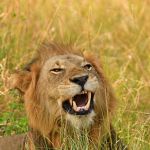

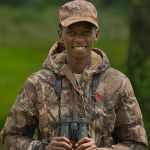
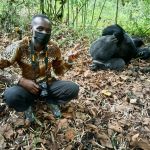




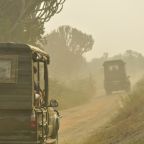
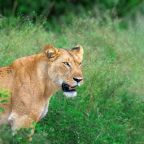
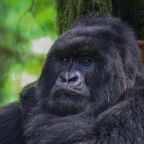
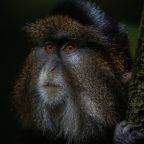
26 Comments
[…] park, covering just 33.7 square kilometres, Mgahinga offers an abundance of natural beauty, mountain gorillas, and rare species like the golden […]
[…] Gorilla trekking in Uganda is an extraordinary adventure that brings you face-to-face with the endangered mountain gorillas in their natural habitat. Whether you choose to trek in Bwindi Impenetrable National Park or Mgahinga Gorilla National Park, you must be well-prepared for the rugged terrain, thick forests, and unpredictable weather conditions. One of the most crucial aspects of your preparation is knowing what to wear for gorilla trekking in Uganda to ensure comfort, safety, and a successful trekking experience. […]
[…] Trekking Gorillas in Uganda is an exhilarating yet physically demanding adventure that brings you face-to-face with the endangered mountain gorillas in their natural habitat. Uganda is home to some of the last remaining mountain gorillas, found in Bwindi Impenetrable National Park and Mgahinga Gorilla National Park. Trekking through these rugged landscapes requires physical endurance, mental preparedness, and the right gear to navigate through dense forests, steep slopes, and unpredictable weather conditions. […]
[…] is home to diverse wildlife, including endangered mountain gorillas, golden monkeys, elephants, and lions. As a responsible tourist, it’s crucial to support […]
[…] Bwindi Impenetrable National Park – Just a short drive away, this is the prime spot for mountain gorilla trekking. […]
[…] renowned parks like Bwindi National Park, home to approximately half of the world’s population of mountain gorillas, and Mgahinga Gorilla National Park, a hotspot for gorilla […]
[…] renowned parks like Bwindi National Park, home to approximately half of the world’s population of mountain gorillas, and Mgahinga Gorilla National Park, a hotspot for gorilla […]
[…] Lodges on the western side of Lake Bunyonyi provide easy access to Bwindi Impenetrable National Park and Mgahinga Gorilla National Park, both famous for gorilla trekking. […]
[…] to the gorilla trekking packing list, allows you to enjoy every moment—from bird watching to gorilla trekking, to simply admiring the breathtaking scenery and serene atmosphere of beautiful Lake […]
[…] Mgahinga Gorilla National Park is just a few hours away. This park is home to the endangered mountain gorillas and offers the opportunity for thrilling gorilla trekking experiences. Additionally, Mgahinga’s […]
[…] you’re dreaming of gorilla trekking, serene lakes like Bunyonyi, and thrilling safaris across Africa’s untouched landscapes, Uganda […]
[…] you’re dreaming of gorilla trekking, serene lakes like Bunyonyi, and thrilling safaris across Africa’s untouched landscapes, Uganda […]
[…] With its lush rainforests, open savannahs, and abundance of wildlife—including the famous mountain gorillas—Uganda offers an unforgettable experience for nature lovers and adventure seekers alike. But how […]
[…] offers travelers an authentic, safe, and unforgettable African adventure. Whether you are planning a gorilla trekking safari, a Lake Bunyonyi tour, or a cultural village experience, a local guide can transform your trip from […]
[…] in East Africa. Whether you’re exploring the source of the Nile in Jinja, trekking with mountain gorillas in Bwindi, or birdwatching on Lake Bunyonyi, solo travel in Uganda offers endless opportunities for […]
[…] the Pearl of Africa—is an exciting venture filled with promise. Whether you’re dreaming of gorilla trekking in Bwindi, exploring the mystical Lake Bunyonyi, or embarking on wildlife safaris in Queen Elizabeth National […]
[…] offers rich experiences you’ll never forget—from mountain gorillas to serene crater lakes. With proper planning, respect for local customs, and guidance from trusted […]
[…] Gorilla trekking in Bwindi and Mgahinga […]
[…] a gorilla trekking safari in East Africa? Whether you’re eyeing the lush jungles of Bwindi Impenetrable National […]
[…] Learn about gorilla trekking and Batwa community […]
[…] on the life-changing experience of trekking through Bwindi Impenetrable National Park to meet the endangered mountain gorillas. Affordable accommodations, cultural add-ons like the Batwa Experience, and expert guidance make it […]
[…] most travelers think of gorilla trekking in Uganda, they imagine the once-in-a-lifetime thrill of standing a few meters from a majestic silverback […]
[…] a gorilla trekking safari requires advance […]
[…] Lake Bunyonyi is one of Uganda’s most enchanting destinations, and for many travelers finishing a gorilla trek in Bwindi or Mgahinga, it becomes the perfect place to rest, reflect, and experience the slower side of Ugandan life. With its 29 islands, calm waters, terraced hills, and cool evening breezes, it offers an ideal contrast to the excitement and physical intensity of tracking mountain gorillas. […]
[…] Gorilla trekking in Bwindi is possible all year round. The dry seasons from June to September and December to February offer easier hiking conditions and clearer trails. However, the rainy seasons also provide lush scenery, fewer crowds, and sometimes better permit availability. […]
[…] balance between adventure and rest. This safari combines the unforgettable experience of tracking mountain gorillas in Bwindi Impenetrable National Park with peaceful time at Lake Bunyonyi, one of Uganda’s most […]
Comments are closed.